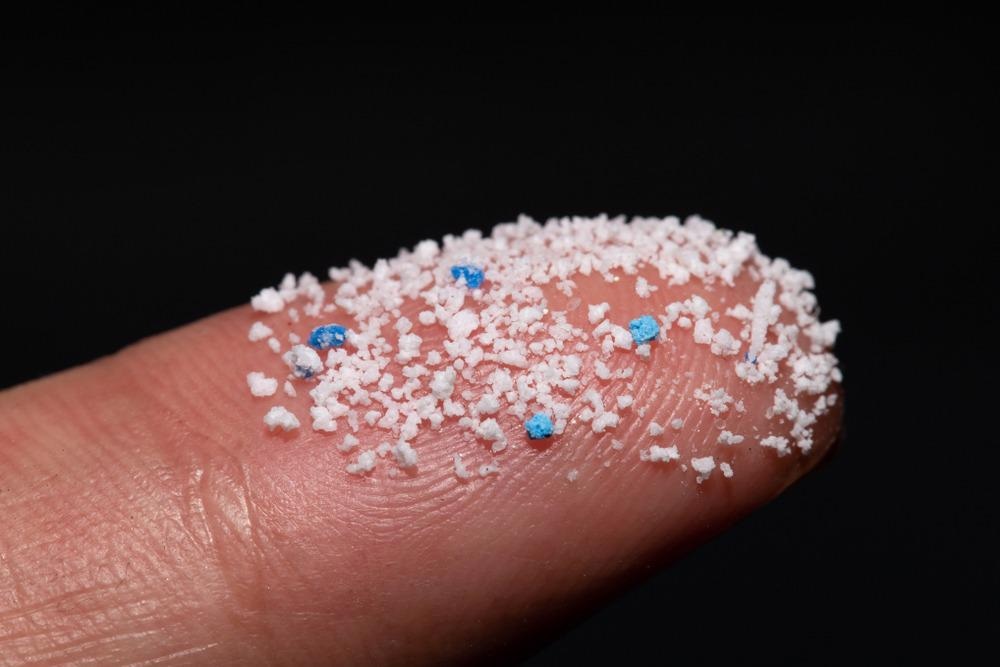Plastic pollution has become an increasing concern with microplastic and nanoplastic contamination in food being a risk for human health. A novel study has investigated the effect of these particles, with an analysis of which factor is responsible, the size, surface or dispersant, and this research has been published in the journal, Toxicology in Vitro.

Study: Microplastics and nanoplastics: Size, surface and dispersant – What causes the effect? Image Credit: chayanuphol/Shutterstock.com
Plastic Pollution
Plastic pollution is a global health concern. Plastic particles are commonly found in the environment, are immersed in mineral and tap water, and ultimately are ingested.
Microplastics have been detected with quantifiable methods, and knowing that these tiny particles are susceptible to further eroding and decomposition, nanoplastic contamination may also present a health risk.
Nanoplastics are defined as plastic pieces with a diameter of less than 100 nm, which is within the nanoscale, and may cause more toxicity than microplastics due to their smaller size, larger surface-to-volume and higher bioreactivity.
These nano-sized particles are considered to be a health risk, with particles of less than 1.5 μm diameter being able to overcome the intestinal barrier and penetrate organs. The potential of nanoplastics to move through the gastrointestinal tract and possibly reach the small intestine holds significant health implications.
Previous research has found nanoparticles that are recognized by microfold cells can be transported to the liver through the lymphatic system; additionally, the journey of nanoplastics such as polystyrene particles can be internalized within liver cells, resulting in potential adverse effects.
Innovative research has investigated polystyrene particles for toxicity upon uptake into the intestinal barrier, through the use of differentiated Caco-2 monoculture and mucus- and microfold (M)-cell co-culture as well as liver cells via differentiated HepaRG cells.
The aim of this critical research was to differentiate between different nanoplastic properties such as size, surface, and dispersant.
Nanoplastic Research
This innovative polystyrene study illustrated the microplastic particles consisted of toxic dispersants, although the particles themselves were non-toxic.
However, the nanosized polystyrene particles that were tested, including a size of 20 nm, were shown to have dose-dependent effects, with high concentrations being able to result in a significant decrease in cell viability.
This conclusion was determined to be due to size and not the dispersants – a reflection of the nanotoxicology paradigm of decreasing size causing more reactivity through having an increased surface to volume ratio.
Surface modification has also shown to have an effect on cellular uptake of plastic particles, which was illustrated through polystyrene particles with different surface modifications.
Existing literature has also supported this correlation of toxicity and a positive surface modification, and nanoparticles with this modification have the ability to change the serum protein composition and protein corona. Additionally, hydrophobicity can also be another surface characteristic that can affect the uptake of particles.
The scientists concluded that the rate of uptake of particles may also be dependent on the type of cell, with intestinal cells being more accessible to particles with amine modifications which decrease their hydrophobicity; however, neutral polystyrene particles were taken up by liver cells more easily.
Human and Environmental Implications
The significance of this research was in carrying out an investigation about different factors and characteristics of polystyrene particles, both micro- and nanosized plastics, which cause uptake by biological systems.
The in vitro data of these researchers suggested microplastics toxicity was due to their dispersant property, while nanoplastic toxicity could be attributed to their size.
However, the surface chemistry is also a significant characteristic for both micro- and nanosized plastic particles, aiding their cellular uptake and the overall impact within the biological system if they were ingested.
This research can aid in understanding the properties of micro- and nanosized plastics, which can assist in possibly creating a defense system.
This could potentially include advanced water treatments which can reduce their cellular uptake if ingested through tap and mineral water, as well as reduce the concentration of plastic particles being allowed into drinking water systems.
Additionally, the field of medicine and health could also be expanded into the detoxification of ingested materials, with further research providing an insight into how plastic toxicity can affect patients and what kind of treatments can be developed against it.
The implications of this research as well as further investigations, will be useful for reducing and sustaining human and environmental health.
Continue reading: How Polymers Analyze Nanoplastics in the Environment
Reference
Stock, V., Böhmert, L., Coban, G., Tyra, G., Vollbrecht, M., Voss, L., Paul, M., Braeuning, A. and Sieg, H., (2022) Microplastics and nanoplastics: Size, surface and dispersant – What causes the effect?. Toxicology in Vitro, p.105314. Available at: https://doi.org/10.1016/j.tiv.2022.105314
Further Reading
Society, N., (2022) Microplastics. [online] National Geographic Society. Available at: https://www.nationalgeographic.org/encyclopedia/microplastics/
Disclaimer: The views expressed here are those of the author expressed in their private capacity and do not necessarily represent the views of AZoM.com Limited T/A AZoNetwork the owner and operator of this website. This disclaimer forms part of the Terms and conditions of use of this website.